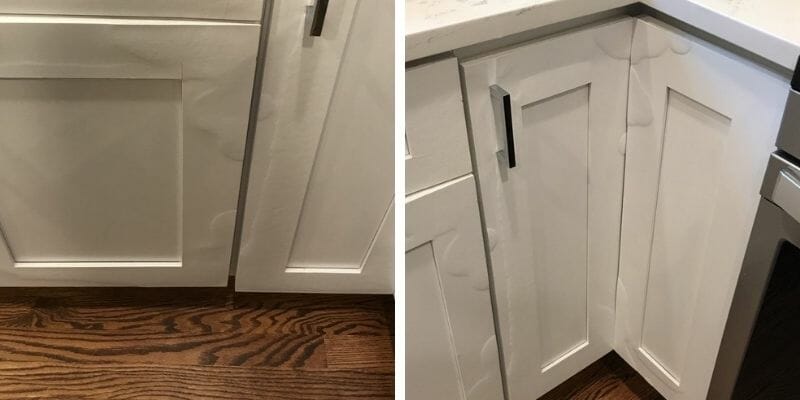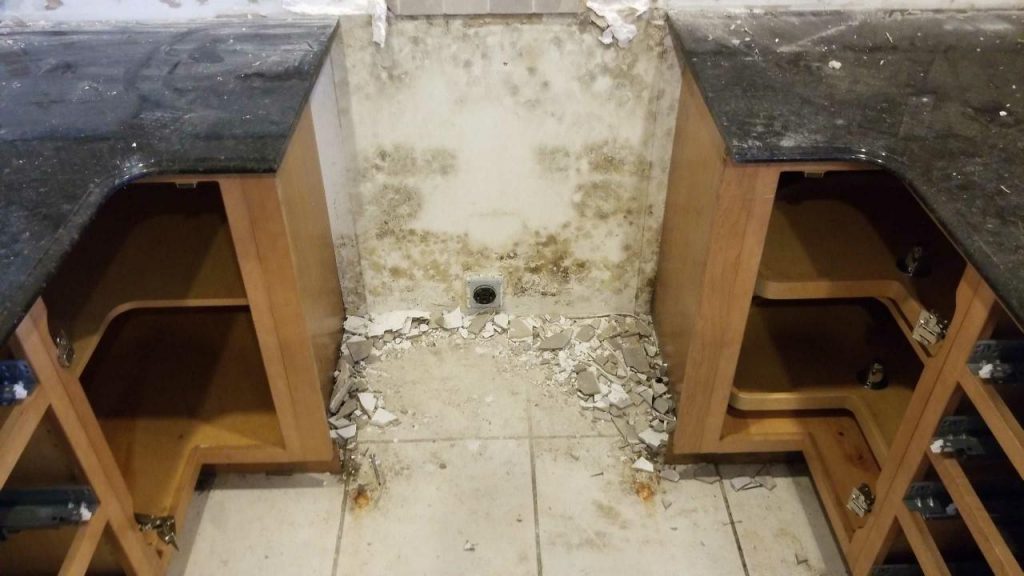Water Damage: Reasons, Signs and Solutions
Book Instantly
Presented here below you will discover a good deal of outstanding content relating to Water Damage in Kitchen.

The kitchen area is the space where a lot of water task takes place. You can hardly do anything without making use of water in the cooking area, from cooking, cleansing, and doing the recipes.
Therefore, checking your cooking area every so often is a necessity. This is due to the fact that it has a higher opportunity of getting water damage due to the home appliances you use there.
When malfunctioning, these appliances that manage water could make your kitchen area messy as well as influence the structure of your structure in the long run.
Allow's check out some reasons of the water damage in the cooking area as well as what you need to look out for.
Some Causes of Water Problems in the Kitchen
These are a few sources of water damage in the kitchen.
Faulty Kitchen Area Sink
The cooking area sink is an important as well as the majority of used part of the cooking area. Hence it is prone to water damage; damages such as obstructed pipelines, leaky pipes, and also faulty faucets.
These problems can be annoying, especially when one is busy in the kitchen area. It does not just happen without providing an indicator or a clue. So here are some signs to understand when your sink is not all right
So, these are the significant problems that can take place to your cooking area sink. One method to stop this damage is by ensuring that food particles do not get right into the pipelines. You are additionally inspecting the pipelines as well as faucets and also making certain that it is appropriately taken care of as well as in good condition.
Leaking Dishwasher
Dishwashers make life in the cooking area less complicated. Nonetheless, it is an optional kitchen area appliance and, when readily available, can be a resource of water damage. Furthermore, like other machines, it will certainly establish faults over time, despite having upkeep.
One of the faults is dripping with the door or below the dishwasher. These mistakes establish due to age, splits, incorrect use, loose links to pipelines, etc.
Faults as a result of age come from continuous use. Consequently, the door leaks as a result of closing and also opening up.
Faults from the wrong use may create water damage by introducing splits to it. For this reason, it is recommended to follow the hand-operated guide of the dishwasher to avoid this particular damages.
The leakages under the dishwasher can originate from cracks in the gasket, pipe, and loosened or wrong link to water pipes or drains.
This sort of leak usually goes unnoticed and also can be there for a long period of time. However, because of the time framework, it can damage the flooring and trigger mold and mildew growth.
A lot more so, the longer the water remains, you will observe the bending of the floor where the dishwashing machine is. When examining if your dishwasher leaks, this is a great indicator to look out for. Spotting as well as fixing this in a timely manner protects against major water damage to your flooring.
Faulty Drainpipe Water Lines
Drain pipes Pipelines are necessary parts of our houses, particularly in our bathrooms as well as kitchen areas. They obtain damaged by obtaining blocked, cracked, and burst. Or worse, they can be wrongly or loosely linked; whichever the situation might be, it can be a serious trouble.
Damaged drainpipe pipes can cause water damage and, consequently, trigger mold growth as well as damage the appearance of your wall surface. It can likewise make the damaged location look unpleasant.
Consequently, it is suggested constantly to inspect to make sure that all the pipelines remain in good condition as well as get a sound plumbing system to preserve as well as repair any type of problems.
Profits
Keeping an eye out for problems in your kitchen area can be tasking yet essential. It makes your job there simpler and more secure.
Nonetheless, the causes noted above are only a few variables to think about, particularly if your kitchen has a great deal of home appliances.
So obtain an expert plumbing solution to find around and also check for any kind of damages and obtain them repaired.
It makes your kitchen location wet and also messy, particularly when dripping from the pipelines. And if it is trickling from the faucet, it leads to water wastefulness.
It is an optional kitchen area device as well as, when readily available, can be a source of water damage. Extra so, the longer the water stays, you will certainly discover the bending of the floor where the dishwashing machine is. Spotting as well as fixing this on time stops serious water damage to your floor covering.
WAYS TO PROTECT YOUR KITCHEN FROM WATER DAMAGE
The kitchen is one of the most significant rooms in your house, as it is a multipurpose room wherein you can do your cooking and cleaning. Nowadays, homeowners tend to ignore the problems under their sink or appliances because of their busy schedules. However, most household floods occur due to plumbing and appliance failure. One of the most common scenarios that cause water damage to your kitchen is when the dishwasher malfunctions and floods gallons of water.
Water damage in your kitchen can cause several problems, including cosmetic damage, mold growth, and even an unpleasant smell. Often, if you fail to neglect the problem, there are always consequences. This article will help you protect your kitchen from water damage.
Common Causes of Water damage in your kitchen
Pipe problems are the most common source of water leaks under your sink. If homeowners ignore this issue, it will burst and flood the kitchen. Dishwasher leaks can be a source of water damage in your kitchen. An old, broken, and defective dishwasher can cause leaks, damage to your floor, and even mold growth. Refrigerator leaks can cause water damage in your kitchen, as sometimes melted ice from defrosting can cause leaks. Furthermore, if your refrigerator has internal problems, it is very likely to cause water damage. Back-splash and sink caulking can cause discoloration and water damage to your countertop tiles. Ways to Protect Your Kitchen From Water Damage
Regular maintenance
The most important thing you can do to protect your kitchen from water damage is to inspect the sinks, drains, and pipes, as well as the kitchen appliances, regularly. As with the sink, check for missing or deteriorated caulk. Remove the old caulk and clean the area thoroughly and re-seal it with fresh silicone. Furthermore, sweep the drain regularly, empty the filter and dispose of the debris in the garbage, and inspect the supply lines and valve for cracks.
Check your appliances
Check the user’s manual for instruction and proper use of every water-related appliance installed in your kitchen. For the dishwasher, check this procedure to prevent the dishwasher from flooding your kitchen. Check the appliances that need water, such as the coffee maker, ice maker, and water cooler, as they can become the cause of water damage in your kitchen. You may call a professional to check and repair damaged appliances and professional restoration for water damage clean-up.
Garbage clean-up
Fats, oil, and grease are common in the kitchen. Pouring them down the drain can cause clogs and sewage backup, which may result in significant kitchen water damage. If your kitchen sink is clogged, use a solution of hot water, baking soda, and vinegar to unclog the fats and oils in the pipes. Also, make sure to throw out the debris in the trash and clean the sink properly using paper towels for greases and oil and soap or bleach solution for the sink itself.
Shut off your water line
Make sure to shut off your main water line, especially if you're away and having some flood issue. As mentioned, dishwasher leaks are one of the most common culprits of water damage in the kitchen. So, make sure to only use the dishwasher if someone is at home and available to attend in case a problem arises.
Furthermore, it is also important that every member of your household knows where the shut-off valves are located. So in case of an emergency, they can mitigate the damage by turning off the water source.
Install leak detectors
One of the best ways to catch water damage before it could even cause serious damage to your home or business is by installing a water or leak detector. A leak detector monitors the flow of water through a pipeline, can detect moisture in the air for molds, and tracks the water temperature. Also, it can shut off your water line in case of an emergency. Install leak detectors under the kitchen sink, near the dishwasher and refrigerator.
https://superiorrestore.com/7-ways-to-protect-your-kitchen-from-water-damage/

We hope you enjoyed reading our section about Most Common Causes of Residential Water Damage . Thanks a ton for spending some time to browse our blog post. Sharing is good. Helping people is fun. Many thanks for your time spent reading it.
View Website